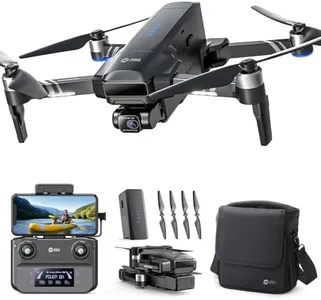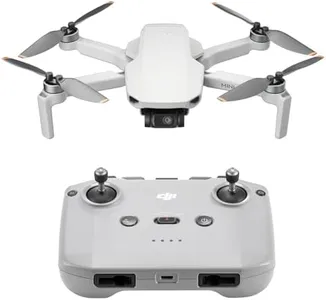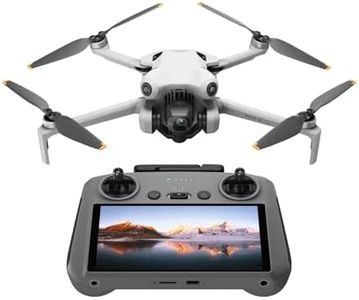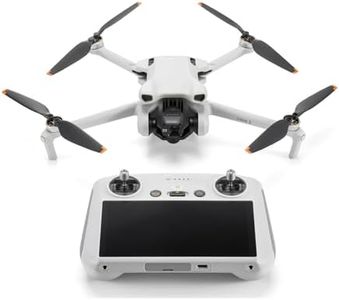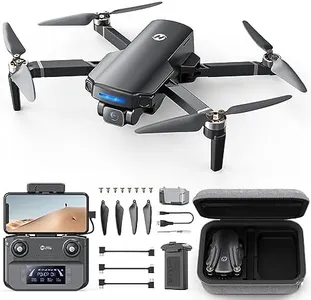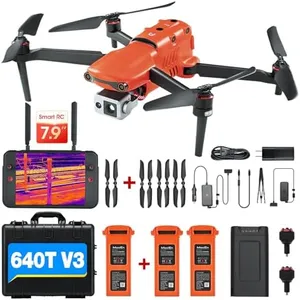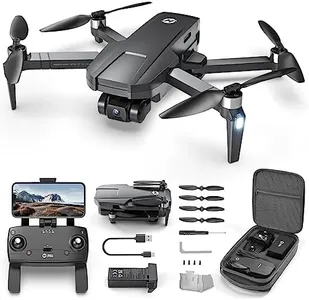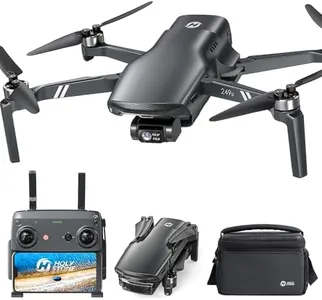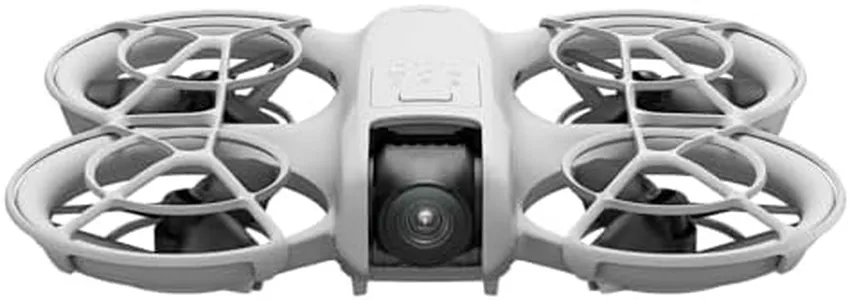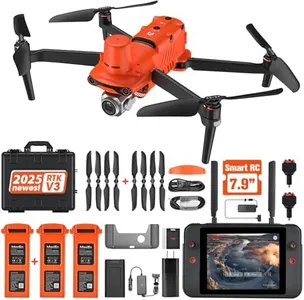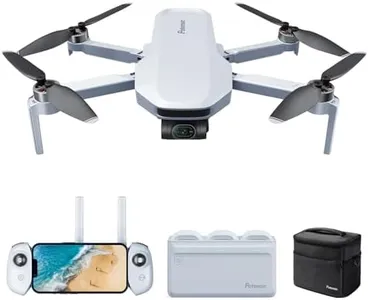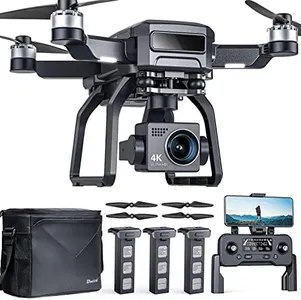10 Best Travel Drones 2025 in the United States
Our technology thoroughly searches through the online shopping world, reviewing hundreds of sites. We then process and analyze this information, updating in real-time to bring you the latest top-rated products. This way, you always get the best and most current options available.

Our Top Picks
Winner
DJI Mini 4K, Drone with 4K UHD Camera for Adults, Under 249 g, 3-Axis Gimbal Stabilization, 10km Video Transmission, Auto Return, Wind Resistance, 1 Battery for 31-Min Max Flight Time, Intelligent Flight
Most important from
1647 reviews
The DJI Mini 4K is a highly portable travel drone, weighing under 249 grams, which means you can use it for recreational purposes without needing FAA registration. One of its standout features is the 4K Ultra HD camera with a 3-axis gimbal, providing smooth and high-quality footage even in challenging lighting conditions. This makes it ideal for capturing stunning travel moments from sunrises to night scenes. With a maximum flight time of 31 minutes per battery, it's quite generous for its size, allowing for extended shooting sessions without frequent interruptions. You can choose sets with up to three batteries if longer usage is needed.
The 10km video transmission range is impressive, giving you the freedom to explore and capture vast landscapes in great detail. Additionally, it boasts level 5 wind resistance, ensuring stable flights in windy conditions. For beginners, the DJI Mini 4K is user-friendly, featuring one-tap takeoff/landing, GPS Return to Home, and intuitive controls that make it easy to operate. The intelligent QuickShots feature can help you take professional-level videos with minimal effort. However, you should note that the DJI Fly app is not available on Google Play, so you'll need to download it from DJI's website, which might be inconvenient for some users.
The drone's build appears durable, but as with any lightweight drone, handling with care is essential to avoid damage. The DJI Mini 4K is well-suited for travelers and beginners seeking a compact, high-quality drone for capturing their adventures.
Most important from
1647 reviews
DJI Mini 4 Pro (DJI RC 2), Drones with Camera for Adults 4K, Under 0.549 lbs/249 g, 34 Mins Flight Time, 20km Max Video Transmission Distance, Omnidirectional Vision Sensing, Mini Drone for Beginners
Most important from
5056 reviews
The DJI Mini 4 Pro is a compelling option within the travel-drone segment, particularly for beginners and casual users. Weighing just under 0.55 lbs, it’s remarkably portable, allowing travelers to easily pack it without worrying about registration hassle. Its camera offers impressive 4K video quality, making it ideal for capturing scenic views and memorable moments during trips. Flight time is another highlight, with up to 34 minutes on a single charge—this greatly reduces battery anxiety, allowing for extended aerial exploration. The drone also features a maximum video transmission range of 20 kilometers, enabling users to maintain a strong connection even from afar.
Safety and ease of use are emphasized through omnidirectional obstacle sensing, which helps novice pilots navigate more confidently, minimizing the risk of crashes. The included DJI RC 2 controller enhances the flying experience with a bright screen for real-time monitoring. The Mini 4 Pro excels in many areas, though it may not suit those with advanced drone needs. Professional users looking for superior camera features and extensive control options might find it lacking. Additionally, while the drone is designed for beginners, the array of features could feel overwhelming to some, requiring a learning curve for optimal use.
In terms of durability, while it's built to resist some wear and tear, like most drones, it’s susceptible to damage from crashes, so handling it with care is essential. Also, potential users should familiarize themselves with local regulations regarding drone flight, especially if intending for commercial use. The DJI Mini 4 Pro is an excellent choice for those who prioritize portability, ease of use, and high-quality aerial content. It's particularly well-suited for travelers wanting to enhance their adventures with stunning aerial photography and videos.
Most important from
5056 reviews
DJI Mini 3 (DJI RC), Lightweight 3x Mechanical Gimbal Drones with Camera for Adults 4K, 38-min Flight Time, up to 32800ft (10km) Video Transmission, Vertical Shooting, GPS Auto Return Integrated
Most important from
4182 reviews
The DJI Mini 3 is an ideal travel drone, especially appealing for beginners and intermediate users. Its standout feature is its portability; weighing just under 249 grams, it does not require FAA registration, making it hassle-free for travel. The 4K UHD camera with 3-axis mechanical gimbal ensures stunning, stable aerial shots, even in windy conditions, making it great for capturing both photos and videos. The camera’s ability to shoot vertically is perfect for social media enthusiasts who want to share their adventures on platforms like Instagram and TikTok.
With a flight time of up to 38 minutes per battery charge, and the option to extend this to 51 minutes with an additional battery, it offers impressive endurance for longer sessions. The 10km range for video transmission allows exploration of vast landscapes without losing signal, and the wind resistance up to 38kph ensures stability in breezy conditions. Ease of use is another strength, with features like GPS Return to Home, Precise Hovering, and Auto Takeoff/Landing making it beginner-friendly. Durability is well-considered with its robust build, and the inclusion of spare propellers and screws adds to its longevity.
However, potential drawbacks include the extra cost for the Intelligent Flight Battery Plus to achieve maximum flight time and the slight increase in weight it brings. Also, while the drone is user-friendly, mastering advanced features might require some time and practice. Its excellent camera quality, portability, and user-friendly features make the DJI Mini 3 a top choice for travel enthusiasts looking to capture high-quality aerial footage.
Most important from
4182 reviews
Buying Guide for the Best Travel Drones
When choosing a travel drone, it's important to consider various factors to ensure you get the best fit for your needs. Travel drones are designed to be portable, easy to use, and capable of capturing high-quality photos and videos. By understanding the key specifications, you can make an informed decision and find a drone that enhances your travel experiences.FAQ
Most Popular Categories Right Now
